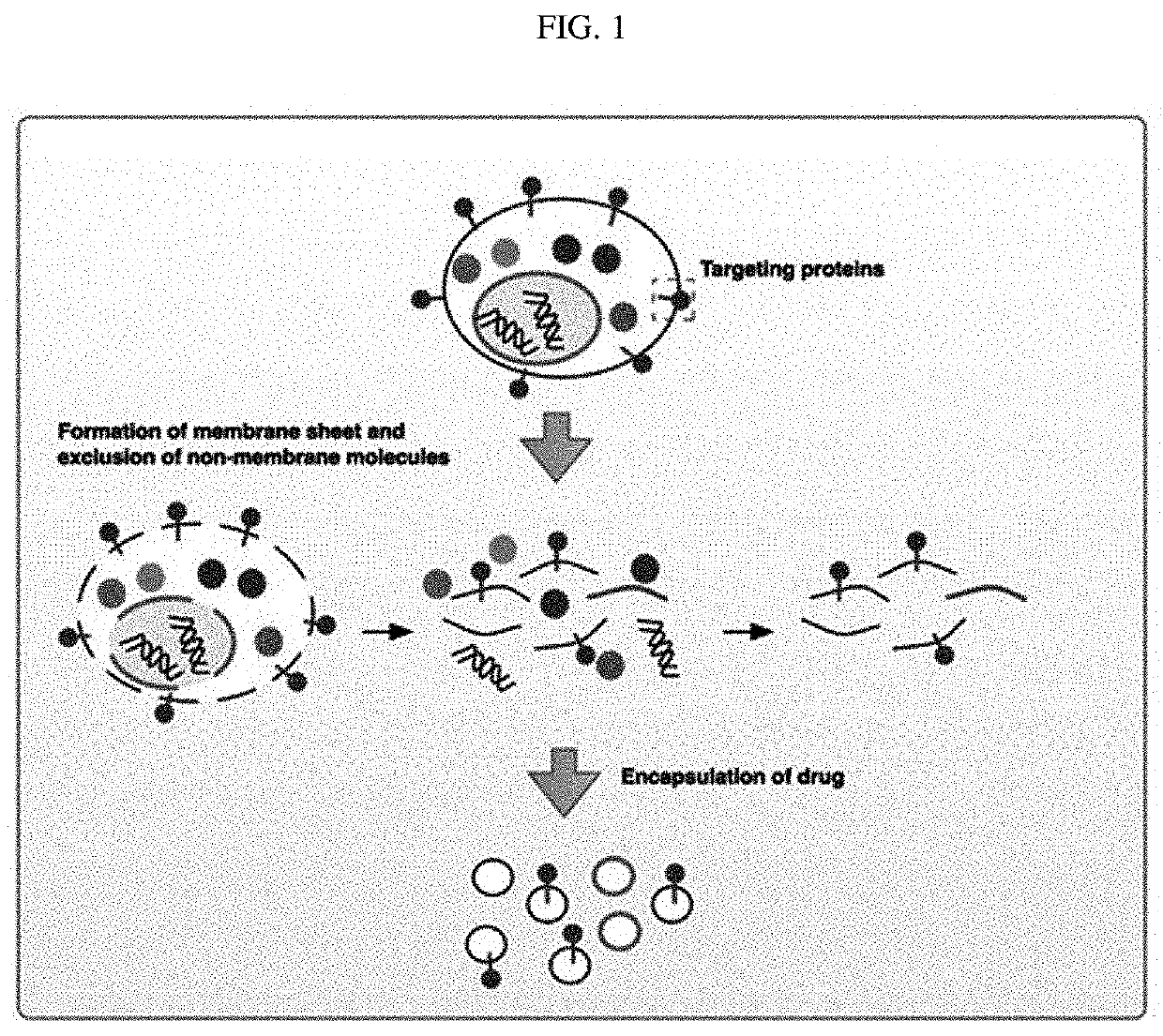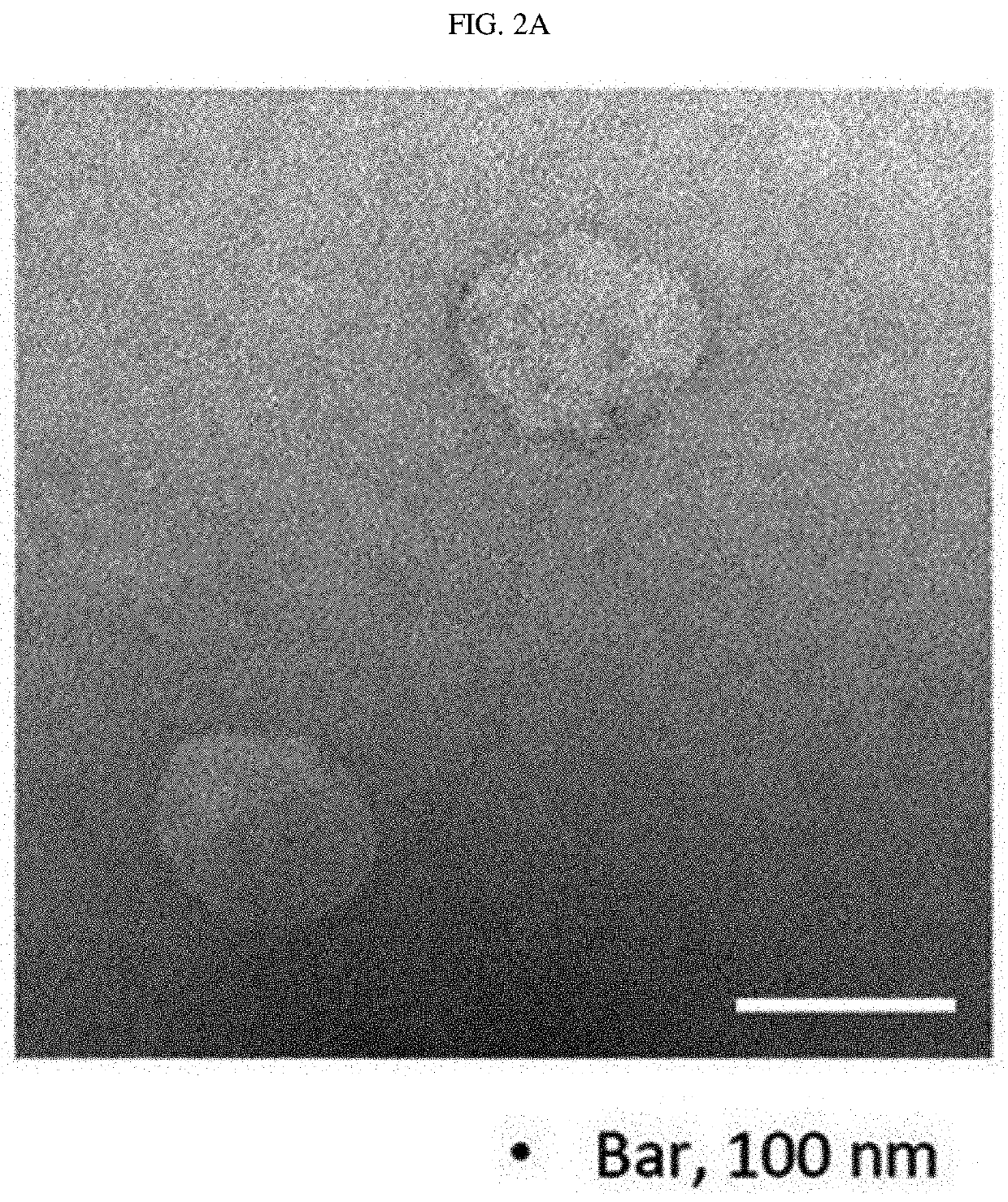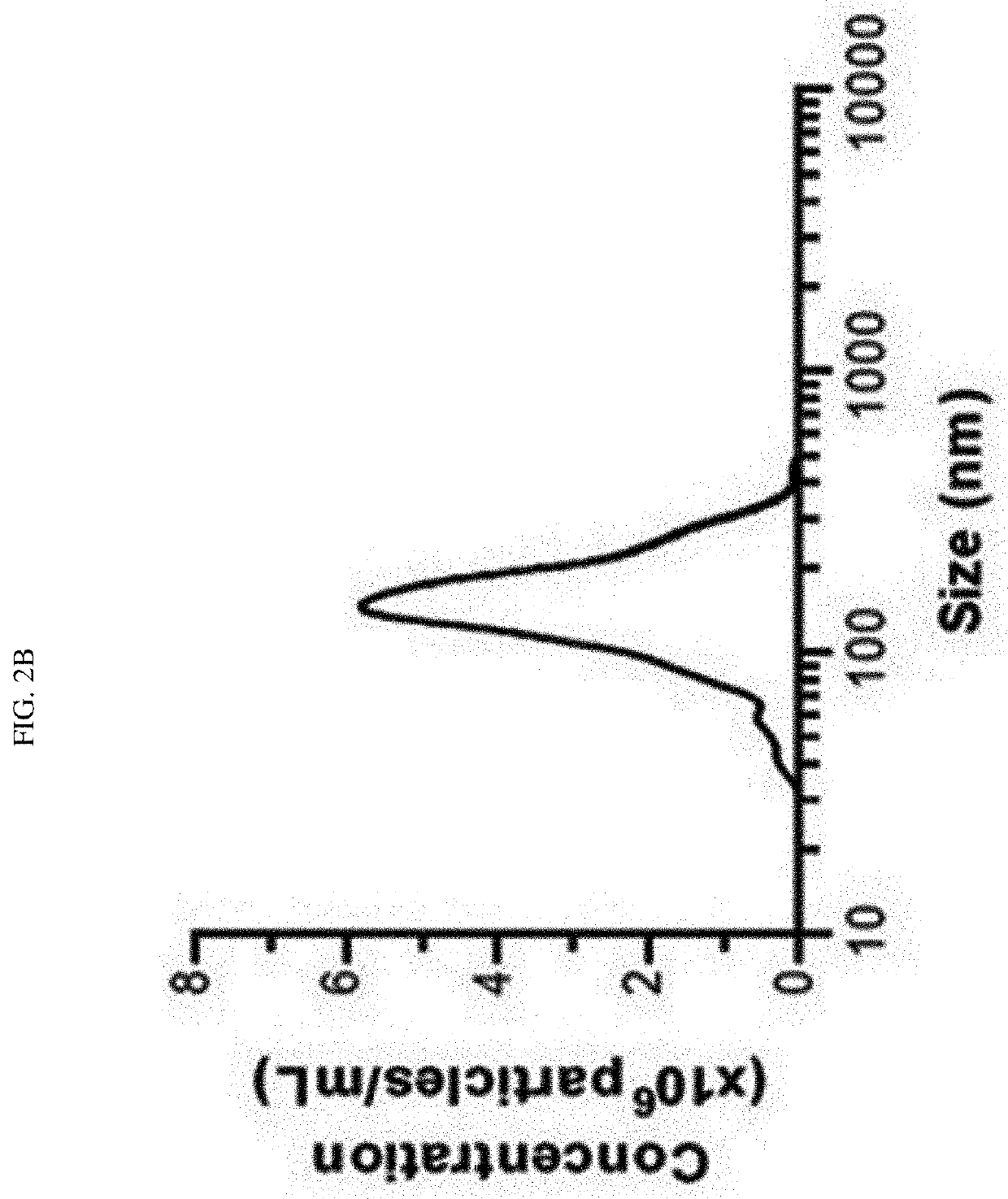Nanovesicles derived from cell membrane, and use thereof
a cell membrane and nanotechnology, applied in the field of cell membrane-derived nanovesicles, can solve the problems that stealth liposomes cannot be used to deliver drugs to specific types of cells or tissues, none of them have passed clinical trials, etc., to achieve the effect of improving therapeutic efficacy, preventing the occurrence of potential side effects, and reducing side effects of therapeutic substances such as drugs
- Summary
- Abstract
- Description
- Claims
- Application Information
AI Technical Summary
Benefits of technology
Problems solved by technology
Method used
Image
Examples
example 1
on of Nanovesicles by Alkaline Solution Treatment and Sonication
[0104]To prepare nanovesicles derived from nucleated mammalian cells or transformed nucleated mammalian cells from which intracellular components had been removed, monocytes or transformed cells were subjected to alkaline solution treatment, sonication, and a density gradient method, and a schematic diagram for preparing the nanovesicles is shown in FIG. 1.
[0105]8×107 U937 cells (ATCC No. CRL-1593.2) were used as monocytes and 4×107 HEK293 cells (ATCC No. CRL-1573) or 4×107 HT1080 cells (ATCC No. CCL-121) were used as transformed cells. Each cell type was treated with 8 ml of an alkaline solution (200 mM Na2CO3, 1× phosphatase inhibitor, pH 11.5), the solution was sonicated 30 times with a sonicator under the conditions of cycle: 0.5 and amplitude: 50, and ultracentrifugation was performed at 100,000×g for 15 minutes to obtain a pellet. The pellet was resuspended in 8 ml of the alkaline solution, stored in a rotor set a...
example 2
ization of Nanovesicles
2-1. Identification of Shape and Size of Nanovesicles
[0106]The shape and size of the monocyte- and transformed cell-derived nanovesicles prepared by the method of Example 1 were analyzed. First, the nanovesicles derived from monocytes were observed using a transmission electron microscope. The nanovesicles derived from monocytes were adsorbed in a glow-discharged carbon-coated copper grid for 3 minutes. The grid was washed with distilled water, stained with 2% uranyl acetate for 1 minute, and observed with JEM101 (Jeol, Japan), an electron microscope.
[0107]As a result, as shown in FIG. 2a, it was found that the nanovesicles prepared from monocytes using alkaline solution treatment were composed of lipid bilayers, had a size of 100 to 200 nm, and exhibited a generally spherical shape. In addition, the nanovesicles prepared from monocytes were diluted in 1 ml of HBS to a concentration of 0.5 μg / ml, 1 ml of the HBS solution containing the nanovesicles was placed ...
example 3
on of Nanovesicles Containing Polyethylene Glycol
[0120]Nanovesicles containing polyethylene glycol were prepared by loading polyethylene glycol into the monocyte-derived nanovesicles prepared according to the method of Example 1.
[0121]After sonication, suspension was performed by adding HBS, and the solution was extruded through a 1 μm filter (two-stack). 0.5 ml of 50% Optiprep, 1 ml of 10% Optiprep, and 3 ml of the suspension were sequentially added into an ultracentrifuge tube, and then ultracentrifugation was performed at 100,000×g for 2 hours to obtain nanovesicles present in the layer between the 50% Optiprep and 10% Optiprep. After ultracentrifugation, 5 μg / ml of cholesterol-polyethylene glycol-biotin was added and incubated at room temperature for 1 hour. Once again, 0.5 ml of 50% Optiprep, 1 ml of 10% Optiprep, and 3 ml of the suspension were sequentially added into a 5 ml ultracentrifuge tube, and then ultracentrifugation was performed at 100,000×g for 2 hours to obtain nan...
PUM
| Property | Measurement | Unit |
|---|---|---|
| pH | aaaaa | aaaaa |
| size | aaaaa | aaaaa |
| size | aaaaa | aaaaa |
Abstract
Description
Claims
Application Information
 Login to View More
Login to View More - R&D
- Intellectual Property
- Life Sciences
- Materials
- Tech Scout
- Unparalleled Data Quality
- Higher Quality Content
- 60% Fewer Hallucinations
Browse by: Latest US Patents, China's latest patents, Technical Efficacy Thesaurus, Application Domain, Technology Topic, Popular Technical Reports.
© 2025 PatSnap. All rights reserved.Legal|Privacy policy|Modern Slavery Act Transparency Statement|Sitemap|About US| Contact US: help@patsnap.com



